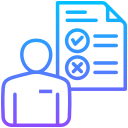Designing Fair, Job-Relevant Assessments
Interview high performers, observe critical tasks, and map soft skills to moments that matter: escalations, handoffs, retrospectives, and customer touchpoints. Your assessment should mirror those realities, not generic hypotheticals.
Designing Fair, Job-Relevant Assessments
Blend situational judgment tests, structured behavioral interviews, role plays, and 360 feedback. Triangulation reduces blind spots and increases confidence that scores reflect authentic, repeatable behavior under real constraints.








